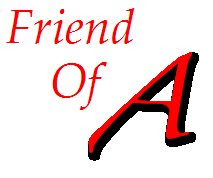
There is a fascinating article in the recent Science about some of the surprises associated with the genome of the sea anemone Nematostella venctisis. The paper concludes that the sea anemone genome is complex, with features more akin to contemporary vertebrates than to other, well-characterized invertebrate genomes (fruit flies and nematodes). This suggests that "the genome of the eumetazoan ancestor was similarly complex."
One of my readers, an evolutionary skeptic, has drawn my attention to it and makes an interesting argument. In effect, he asks how this complexity could've been retained for hundreds of millions of years while lying "unexpressed"? After all, natural selection only operates on the phenotype, so how could it act to preserve introns?
I happen to think my reader is confusing the genes we see expressed now in sea anemones with the capacity to build modular regulatory networks that facilitate and control such gene expression. I think this capacity has been strongly conserved in sea anemones, not so much in other invertebrates. This is a finding that cries out for some sort of explanation, but not necessarily one that contradicts the modern synthesis.
But, ya know, I could be wrong. I invite readers who know more about this topic to comment, and I will also see if I can track down a reaction to this concern from one of the paper's primary authors. In the meantime, here's an exciting new clearing-house for information on Nematostella, which is emerging as an important model organism in evo-devo and other fields.
9/08/2007
THE SEA ANEMONE GENOME
Posted by
Scott Hatfield . . . .
at
9:27 AM
![]()
Labels: science education
Subscribe to:
Post Comments (Atom)




No comments:
Post a Comment